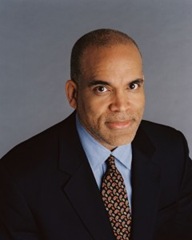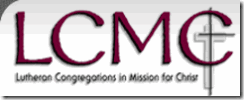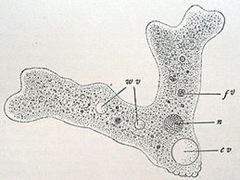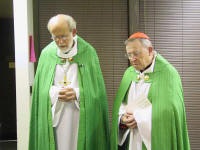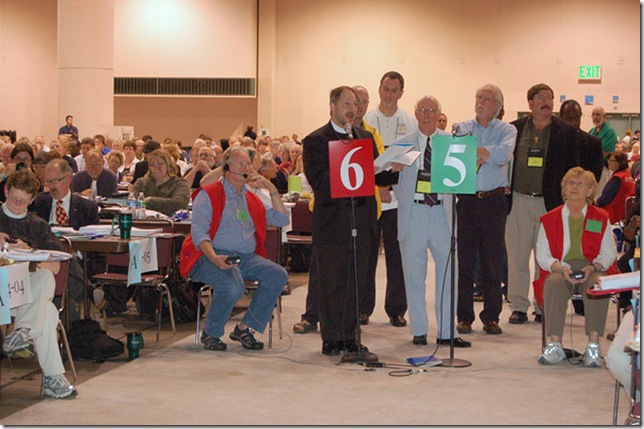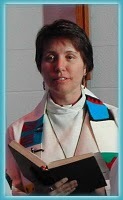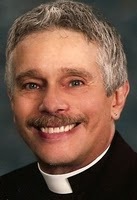 Dr Martin Luther King Jr. championed civil disobedience as a pushback or resistance to existing law with the goal of ultimately changing the law; of course, that is precisely what happened. Rosa Park’s refusal to sit in the back of the bus and lunch counter sit ins are prototypical examples of civil disobedience. Of course, King had learned from Mohatma Gandhi who used civil disobedience, first in South Africa and later in India, to exact reforms and ultimately Indian independence from colonialist England.
Dr Martin Luther King Jr. championed civil disobedience as a pushback or resistance to existing law with the goal of ultimately changing the law; of course, that is precisely what happened. Rosa Park’s refusal to sit in the back of the bus and lunch counter sit ins are prototypical examples of civil disobedience. Of course, King had learned from Mohatma Gandhi who used civil disobedience, first in South Africa and later in India, to exact reforms and ultimately Indian independence from colonialist England.
In the Episcopal Church, the election of V. Eugene Robinson as New Hampshire bishop in 2003 was also a form of civil disobedience. Despite denominational rules to the contrary, Robinson was elected as bishop as an openly gay man in a committed relationship. Six years later, the Episcopalians revised their rules to include “all the baptized in all the sacraments”. The fait accompli of Rev Robinson forced the Episcopalians to confront the issue of gay clergy and to ultimately change church policy de jure to accord with the de facto status of Bishop Robinson.
The extraordinary ordinations of gay clergy in the ELCA in the early ‘90’s, accelerating in the new millennium, similarly helped to push the issue of gay clergy to the forefront of the ELCA consciousness, culminating in the momentous actions of the ELCA churchwide assembly of 2009 (CWA09) in which ministry policies were formally changed to allow persons in same gender, livelong, monogamous relationships to become rostered clergy. Those who pushed back, who exerted pressure through civil disobedience, are now being welcomed back into the ELCA (see prior posts here and here).
The most recent example is Pastor Anita Hill of St Paul Reformation church. After I sent Pastor Hill a congratulatory email, she replied, “I’ll be glad when the process is complete for all of us in ELM [Extraordinary Lutheran Ministries]”, and her email contained a quotation from Alice Walker: “The most common way people give up their power is by thinking they don’t have any.”
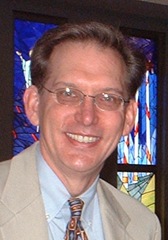 The Presbyterian Church (USA) is now witnessing the same process of civil disobedience. The John Knox Presbytery covers SW Wisconsin, NE Iowa, and SE Minnesota. As an ELCA person, I think of a Presbytery as being similar to an ELCA regional synod (or diocese in the Roman Catholic and Episcopal traditions). A lengthy article published Feb 22 by the Presbyterian News Service provided background and context to the news that the John Knox Presbytery had voted to reinstate Scott Anderson, a gay man in a twenty year committed relationship, to the rolls of Presbyterian ordained clergy despite ministry policies to the contrary.
The Presbyterian Church (USA) is now witnessing the same process of civil disobedience. The John Knox Presbytery covers SW Wisconsin, NE Iowa, and SE Minnesota. As an ELCA person, I think of a Presbytery as being similar to an ELCA regional synod (or diocese in the Roman Catholic and Episcopal traditions). A lengthy article published Feb 22 by the Presbyterian News Service provided background and context to the news that the John Knox Presbytery had voted to reinstate Scott Anderson, a gay man in a twenty year committed relationship, to the rolls of Presbyterian ordained clergy despite ministry policies to the contrary.
The ordination standards of the Presbyterian Church (U.S.A.) [require] that those being ordained practice “fidelity within the covenant of marriage between a man and a woman or chastity in singleness.”
The Anderson case is based on an apparent loophole in the polity of the PCUSA based on a “scruple” which is an “objection of conscience”. That is, Anderson claimed an objection of conscience to the fidelity-and-chastity rule, and his Presbytery, by a vote of 81-25 agreed. But, that is certainly not the end of the story as opponents will likely appeal this decision to the judiciary of the PCUSA, which must decide whether the policy of “scruple” may be used to circumvent the fidelity-and-chastity ordination rule. If the PCUSA judicial system upholds the ordination of Anderson, it will have established a precedent, a fait accompli, that the PCUSA General Assembly must confront.
The PCUSA is scheduled to convene its 219th annual General Assembly on July 3 in Minneapolis (perhaps ironically, in the same venue as the ELCA assembly which voted to allow gay clergy last year). Certainly, ministry policies will be front and center of the assembly business. If the PCUSA judiciary affirms the Anderson ordination based on the policy of “scruple”, it would appear that the burden of persuasion will have shifted from gay clergy advocates to their opponents; that is, it will be the burden of the opponents of gay clergy to persuade the assembly to change the policy and not vice versa.
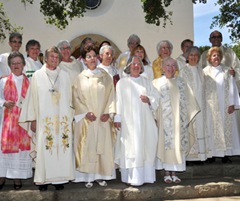 In a similar context, there is a “Womanpriest” civil disobedience effort underway within the Catholic Church in the US (see prior posting). The official Roman Catholic policy prohibiting female ordination is set in stone, and there are no exceptions based on “scruple”. Yet, a group of women, and their male supporters, are proceeding to ordain females nevertheless, at the risk of excommunication.
In a similar context, there is a “Womanpriest” civil disobedience effort underway within the Catholic Church in the US (see prior posting). The official Roman Catholic policy prohibiting female ordination is set in stone, and there are no exceptions based on “scruple”. Yet, a group of women, and their male supporters, are proceeding to ordain females nevertheless, at the risk of excommunication.
Womanpriest Bishop Andrea Johnson spoke the following as quoted by a Nashville blogger in advance of Johnson’s appearance at Vanderbilt:
“We feel that canon law, which does not represent the people at all — only a few guys in Rome — is unjust,” Johnson [said]. “We’re breaking canon 1024. Like Rosa Parks, we’re saying, ‘No, we are not going to sit on the back of the bus.’ “
